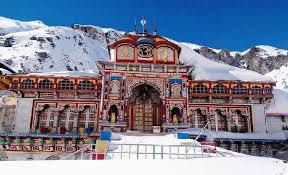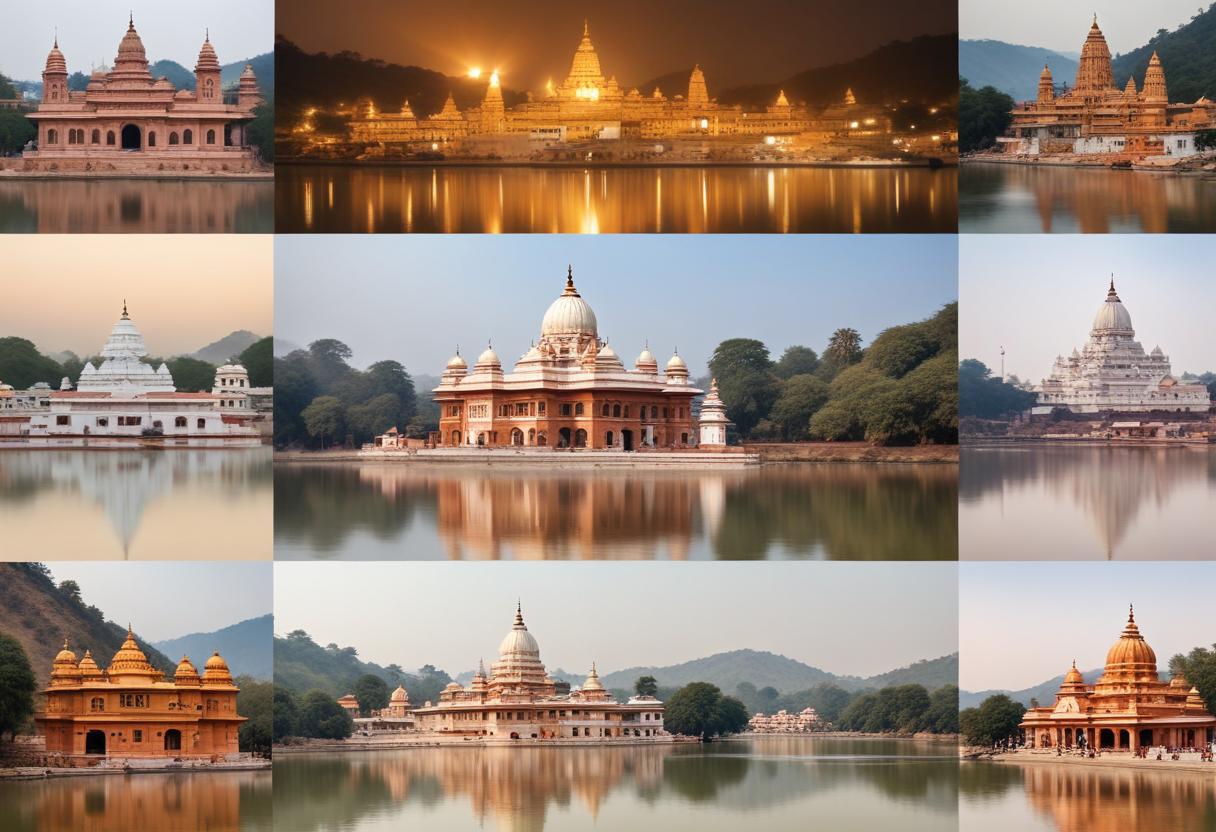
Badrinath is a town in the Chamoli district of Uttarakhand named after its famous temple, the Badrinath temple. This is a huge beautiful temple dedicated to Lord Vishnu and serves as a major pilgrimage site for the ones travelling to Uttarakhand. It is one of the four holy places of Hindus delving into Char Dham Yatra. The other places in the Char Dham Yatra are Yamunotri, Gangotri, and Kedarnath.
This place has an interesting history associated with it. In this article, we will explore everything about Badrinath and will get a small guide on “how to visit the place?”
History Associated with Badrinath
Back in the Ninth Century, a holy legend and a teacher of Advaita Vedanta named Adi Shankaracharya discovered a black stone image of Lord Badrinarayan from the Alaknanda River. It was believed to be made of black Shaligram stone. He established the stone in the Tapt Kund.
Later, in the sixteenth century, this stone murti was transferred to the present day Badrinath temple by the King of Garhwal.
When Does Badrinath Yatra Begin?
Badrinath can experience unpredictable weather and unseasoned rainfall. This is why it becomes necessary to take necessary precautions like carrying enough warm clothes and other basic necessities. The temple is situated at a great height of Garhwal Himalayas and hence experiences relatively mild temperatures in Summers. Thus the time during late April to June is the most ideal season to begin the yatra to Badrinath.
How to Reach Badrinath From Various Locations?
Badrinath is situated at an altitude of 3,100 metres (or 10,170 feet) in the Garhwal Himalayas on the banks of Alaknanda River. It is reachable by road from Gaurikund as the distance is just 233 KMs from there.
From Delhi:
You can book a direct bus that will take you to Badrinath directly from Delhi. If you choose to follow a specific route, the bus will take you to Haridwar first. Then you can change the bus and get to reach Joshimath from Rishikesh.
You can even book a taxi from Joshimath to reach Badrinath as this is a short distance of about 45 KMs.
You can also travel by train from Delhi to Haridwar and then can follow the descriptive route.
From Haridwar:
Haridwar/rishikesh is the common destination for everyone travelling to Kedarnath or Badrinath. Badrinath is just 301 KM north of Rishikesh and 316 KM from Haridwar. You can go on the road by the most economical passage of a bus or can even book a train seat to get there. Haridwar railway is linked to major cities of the country including Delhi, Dehradun, Jammu, Ambala, Pune, Mumbai, Kolkata, and Ahmedabad.
Temperature In Badrinath
As the temple is located in the Himalayas at an altitude of more than 3,000 KMs above the sea level, the temperatures are relatively cold. To begin the yatra to Badrinath, the month of May is believed to be the best time for pilgrimage.
The summer season starts in May and continues till June. The days during this month remain cold and night becomes chill. The temperature generally ranges from 15°C to 20°C in the summers.
Monsoon season (from July till September) experiences heavy rainfall and unpredictable dangerous thunderstorms. Hence, pilgrimage should be avoided during this time. Similarly, winters bring heavy snowfall covering the area all over with white sheets and can be harmful for the travellers. The temperature during winters falls below the freezing point.
How To Register For The Yatra?
The pilgrims travelling to Badrinath need to register themselves for the yatra at an official website badrinath-kedarnath.gov.in. This is a government-certified website by a community called BKTC. They organise safe travel to two of the Char Dhams — Badrinath and Kedarnath.
There are various other travel agencies that offer suitable services as per your convenience.
The registration process may involve providing your identities, days and dates of travel, and other information. At the end of the formalities, you will have to pay the processing fee for the yatra.
How Many Pilgrims Travel To Badrinath?
Before COVID, the number of pilgrims in 2019 were reported to be 12,40,000 while during COVID outbreak, the number dropped slightly to 2,75,000 pilgrims.
More recently, in 2022, Badrinath saw around 17.6 lakhs of devotees visiting the temple. The numbers usually increase every year and may depend on various factors like socio-economic status, weather, availability of resources, and others.
Things To Do In and Around Badrinath
The main attraction of the Badrinath is its holy Badrinath temple, dedicated to Lord Vishnu.
Besides the holy temple, there are numerous other attractions to visit and engage in to do in and around Badrinath, these are listed below.
- Visit Manu Village
Manu village is the last village before the Indian Border. It is no less than a paradise serving beautiful scenery all across its area. The village is also famous for the Bhotiya tribe’s woven woolen garments.
- Stay at Ashrams
Instead of staying at prestigious and costly hotels, you can choose to live in Ashrams. There are various ashrams across Badrinath city. One can practise yoga and peace of mind, staying at these places. You can consider some popular ashrams like Lok Ashram or Manav Kalyan Ashram among others.
- Trek across for Vasudhara Waterfalls
Among many enjoyable visits, you can consider visiting Vasudhara waterfalls. The trek can be started from Manu village while enjoying various other waterfalls on the way. This is a perfect adventure and a wonderful sight for outdoor activity lovers.
Latest update
Char Dham Yatra began on May 10 already while the doors to the Badrinath temple opened on April 12 (Sunday). The gates have been opened for devotees after a long break of six months.
The “Abhishek Puja” began at 7AM on Sunday, chanting the slogans of “Badri Vishal Lal ki Jai”.

